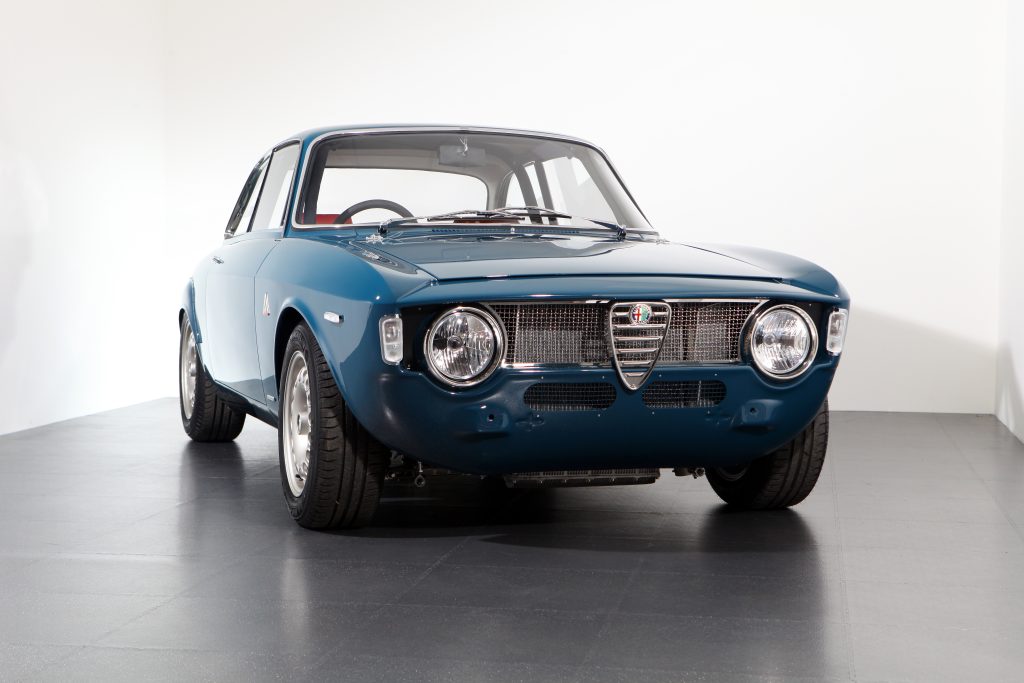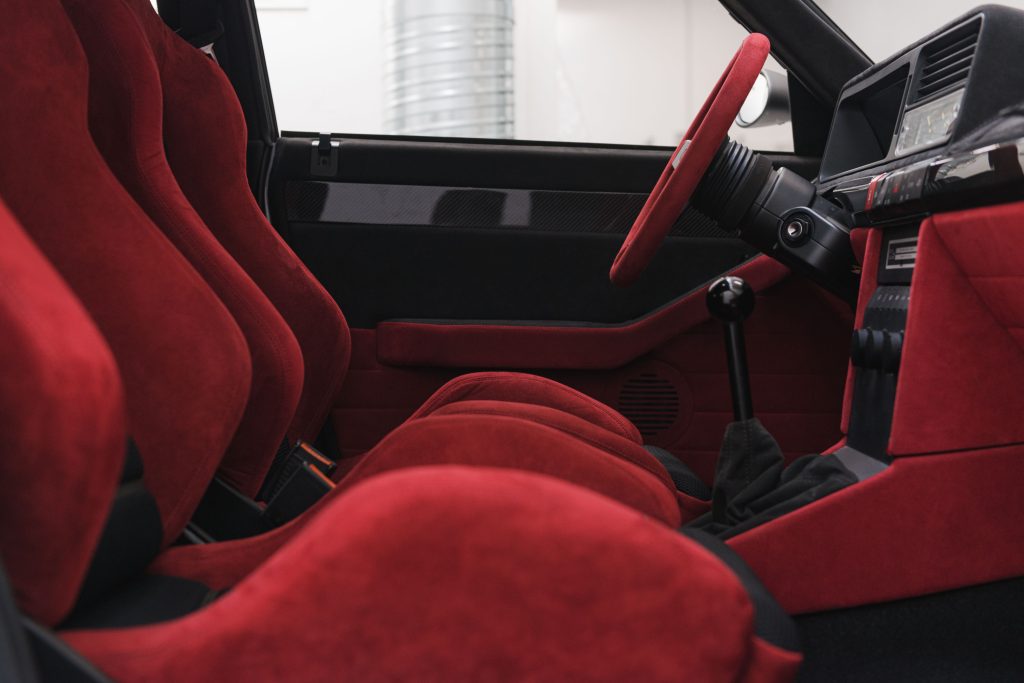Motoring enthusiasts are indulging their nostalgic instincts without compromising on modern comfort and capability with help from a growing number of restomod purveyors.
By Kyle Fortune
“Whenever you feel change, you develop a feeling for nostalgia, for what makes you feel good,” says car designer Carlo Borromeo. “You have the monumental change from the analogue car to the digital and from combustion cars to the electric ones. With all these big transitions, there’s an interesting change in dynamic.”
Borromeo, along with friend and business partner Eugenio Amos, is behind Automobili Amos, an all-Italian company that builds the Lancia Delta Integrale Futurista. Featuring a two-door, carbon fibre body and produced in a batch of just 20, the Futurista is Automobili Amos’s evolved take on the Delta Integrale. It uses an original car as its basis but applies modern design, manufacturing and materials “under its skin” to unleash fresh potential for the current era.
Automobili Amos isn’t alone in creating such a car. If there’s been a notable trend in the classic car world in the past decade it has been the rise of the “restomod”, where classic cars are restored, enhanced and modified to deliver a superior driving experience.
“[The approach] works well with cars of the late ’80s and early ’90s,” Borromoeo notes. “It’s like with music [of that time], that was an era of great creativity but of poor production. [Similarly], the cars had a lot of personality, but also very evident flaws in the way they were built. That makes these cars prime candidates for restomods because what you do with a restomod is take the identity of a car and carve away all the bullshit and let it shine. You take it to its maximum expression.”
As long as cars have been restored there has been a degree of enhancement, but today the restomod is a recognised paradigm in the classic automotive community, and a growing one. LA company Singer, which has long worked with the Porsche 911, has arguably been instrumental in legitimising and popularising the idea of such re-imagined cars outside the traditional boundaries of the automotive enthusiast community. Since 2021, Australians have enjoyed more streamlined access to these luxury vehicles via Victoria-based importer Zagame Automotive.
A number of other companies have made their names with tricked-out tributes to Porsche classics: Gunther Werks, Canepa and Emory Motorsports in the US, Tuthill and Theon Design in the UK, Nardone in France to name just a few. For those with a taste for off-road adventures, Icon in California’s San Fernando Valley is the go-to for a Ford Bronco or Toyota FJ modelled on the 1960s originals, while Land Rover enthusiasts can choose from any number of specialists to build a better performing vintage-look 4×4.

For a high-performance, modern take on a muscle car with improved braking, better handling, and superior comfort and looks, look to US outfits such as Ring Brothers, Foose Design or Pure Vision.
UK-based Moto Technique will enhance your vintage Ferrari, while Eagle E-Types opens up Jaguar possibilities; Mechatronik in Germany will make the Mercedes-Benz of your classic-car dreams; Cyan Racing in Sweden has the Volvo P1800 covered; and Kimera in Italy offers a glorious take on the Lancia 037.
UK-based Alfaholics, run by respected Alfa Romeo specialists Richard, Max and Andrew Banks (father and sons), is focused on the 105 series Alfa Romeos. Max—the company’s director of sales and product development when he’s not busy racing—describes it as a mail-order parts company. While that’s technically correct, it undersells the family-run business somewhat. “Our business has evolved over four decades of racing, restoring and improving parts for Alfa Romeos,” he explains. “I grew up around these cars.” The result is that Alfaholics is not only able to sell you parts for your car but also build you a significantly enhanced GTA-R coupe according to your particular specifications. Banks adds: “We keep the DNA of the species but optimise it to be the best of what it can be.”
Naturally, with all restomod cars, the process takes time and money. Hours count in the thousands, and the materials and bespoke nature of each build means costs can vary widely. Prices start at around AU$450,000, rising to more than $2 million. Even so, the best restomod companies are all backlogged with orders. Automobili Amos sold every one of its 20 Futuristas within a month of its reveal.
Compared to modern super and hyper cars, restomods are actually relatively inexpensive, particularly when you take into account the exclusivity and opportunity for personalisation they allow. They’re arguably more enjoyable and engaging to drive too, the restomod phenomenon itself being somewhat of a backlash against the tendency for ever-faster but significantly less-involving drives in the contemporary performance car sphere.
Like Carlo Borromeo, Simon Lord of British restomod company Redux also circles back to nostalgia as the driving force behind the trend. “People remember these cars as kids, maybe their neighbour, their dad, mum, uncle or friend had one and they always lusted after one but could never really afford it. Now they can afford it, and they drive one and it’s underwhelming, because why wouldn’t it be? Things have moved on significantly since the original car was introduced. Therefore, the question is: how do I keep the look and feel of that thing that reminds me of that emotional attachment to that time of my life but drives like a modern car?”
Redux focuses on the BMW E30 M3. Lord explains that he wants to simplify and improve the car; his goal is to create a run of 30 cars with performance akin to the more modern E46 M3 CSL. That’s achieved by applying lighter weight materials, with a body almost entirely constructed from carbon fibre—a car respectful to its era but enhanced in every way.
Interestingly, the restomod is enabled by the same modern production techniques that have, in many ways, homogenised the automotive world in the first place, including things like rapid prototyping and 3D printing technology. The fact that companies can produce limited batch runs of unique parts, often in single digits, rather than in runs of hundreds or thousands, is enormously beneficial for this kind of bespoke production.
While it’s no surprise that demand is high for such expressive and engaging machines, it currently falls to only a few dedicated souls to breathe fresh life into these museum-quality automobiles.


